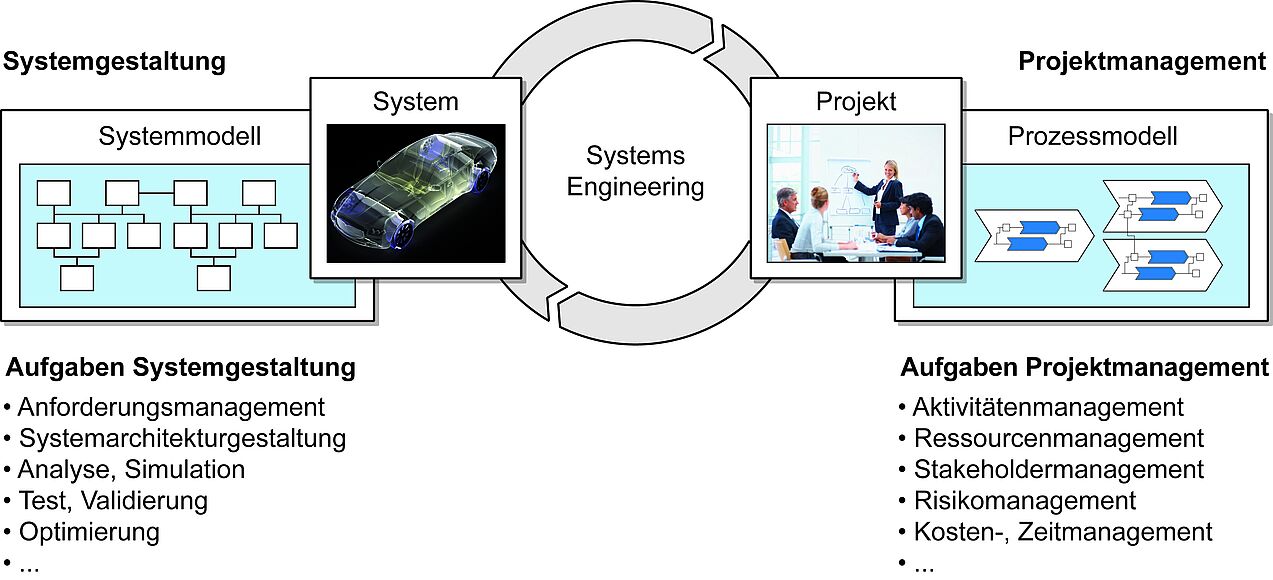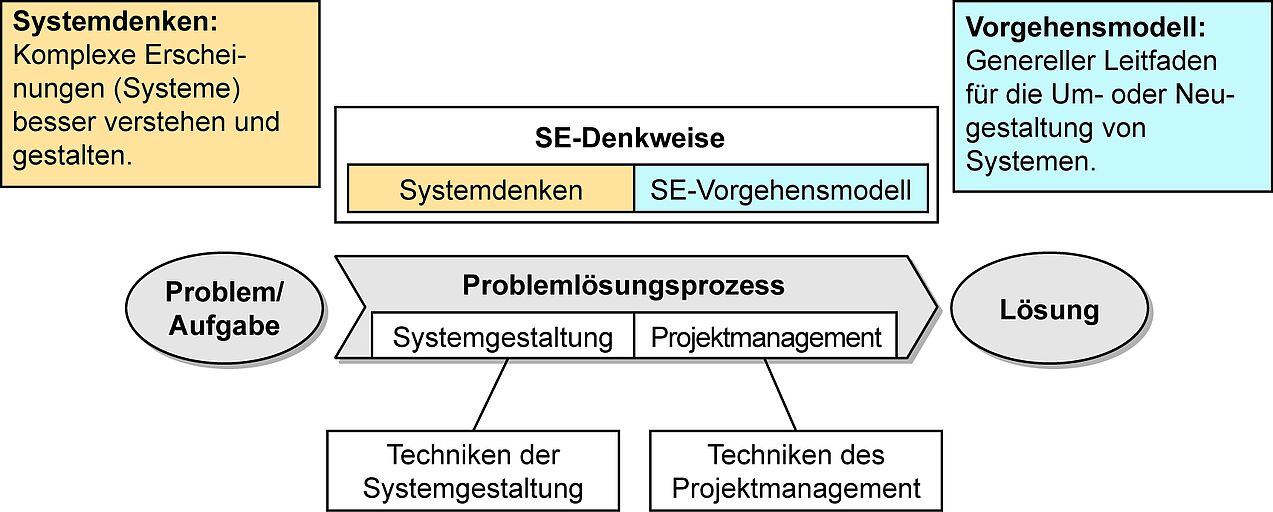Interdisciplinary specification of products, services and production systems

Systems engineering (SE) is a promising approach to creating complex technical systems. Recently, the approach has spread from the traditional fields of application in aerospace to other sectors such as the automotive industry. Systems engineering is an integrated, interdisciplinary approach to the development of technical systems. It places the multidisciplinary system at the centre and encompasses the entirety of all development activities. The focus is therefore on interdisciplinarity and a targeted, holistic approach to problems. Systems engineering claims to orchestrate the players in the development of complex systems. To this end, it integrates system design and project management.

Daenzer and Huber's reference model, which we have modified and reproduced in Figure 2, has become established for describing the structure of systems engineering. According to this model, the idea described at the beginning is taken up that systems engineering integrates system design and project management.
The basis of the systems engineering concept is the problem-solving process, which is determined by both system design and project management. While project management ensures the successful completion of projects from an organisational perspective, system design focuses on the problem itself and finding a solution. As part of the interdisciplinary system design, the so-called system architecture is developed, which determines downstream development activities. This is done on the basis of considerations and decisions from strategic product planning, such as a platform strategy.
While the problem-solving process is customised depending on the specific problem, the SE way of thinking describes the intellectual framework of systems engineering. It comprises systems thinking and the SE process model. Systems thinking helps to understand, structure and ultimately design complex interrelationships and systems. The system is analysed from different perspectives. Depending on the problem and situation, different levels of abstraction are selected, which depend on the expediency and relevance of the problem. The SE process model provides recommendations and guidelines for structuring the solution finding process into manageable sub-processes. In addition to the SE process model, there are a number of specific process models for system development, of which, for example, the VDI guideline 2206 has established itself as a quasi-standard for the development of mechatronic systems.
Our research focusses in the context of systems engineering are
- Integrated mechatronic components/3D-MID (moulded interconnect devices)
- Development methodology and development management
- Model-Based Systems Engineering (MBSE)
- Digital product development and product lifecycle management
- Augmented reality/virtual reality
- Virtual prototyping and simulation
Literature
- Daenzer, W.F.; Huber, F.: Systems Engineering - Methodology and Practice. Publisher Industrial Organisation, Zurich, 2002
- Haberfellner, R.; Weck de, O. L.; Fricke, E.; Vössner, S.: Systems Engineering - Fundamentals and Application. Orell Füssli, Zurich, 2012
- Gausemeier, J.; Dumitrescu, R.; Steffen, D.; Czaja, A.; Wiederkehr, O.; Tschirner, C.: Systems Engineering in Industrial Practice. Heinz Nixdorf Institute, Fraunhofer Project Group for Mechatronics Design Technology, UNITY AG, Paderborn, 2013
- Gausemeier, J.; Dumitrescu, R.; Echterfeld, J.; Pfänder, T.; Steffen, D.; Thielemann, F.: Innovationen für die Märkte von morgen - Strategische Planung von Produkten, Dienstleistungen und Geschäftsmodellen. Carl Hanser Publishing House, Munich, 2019
